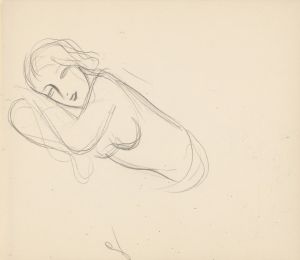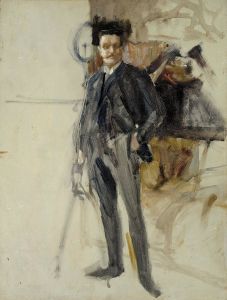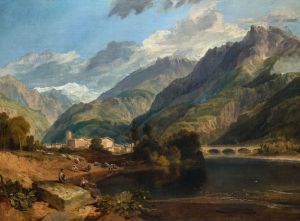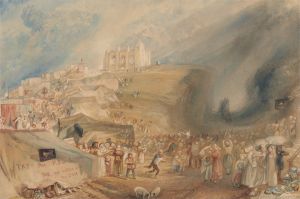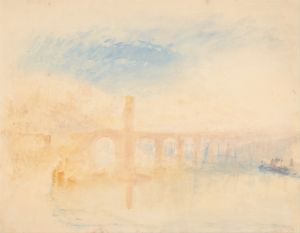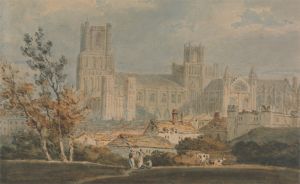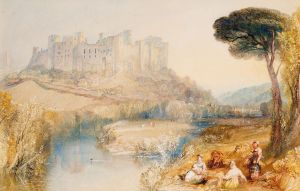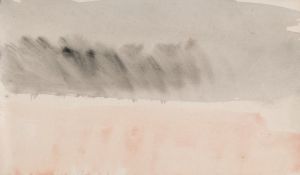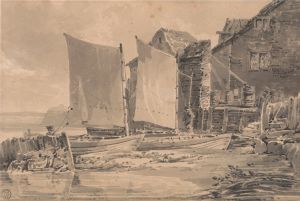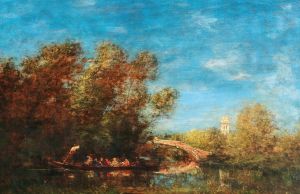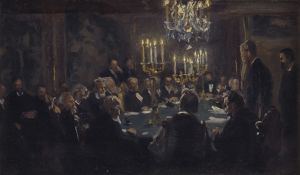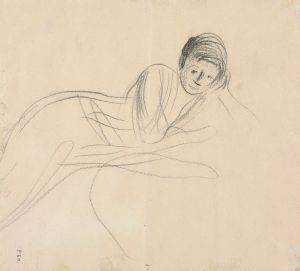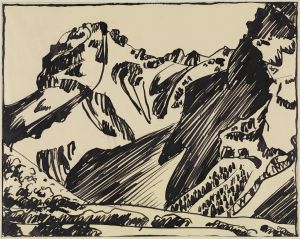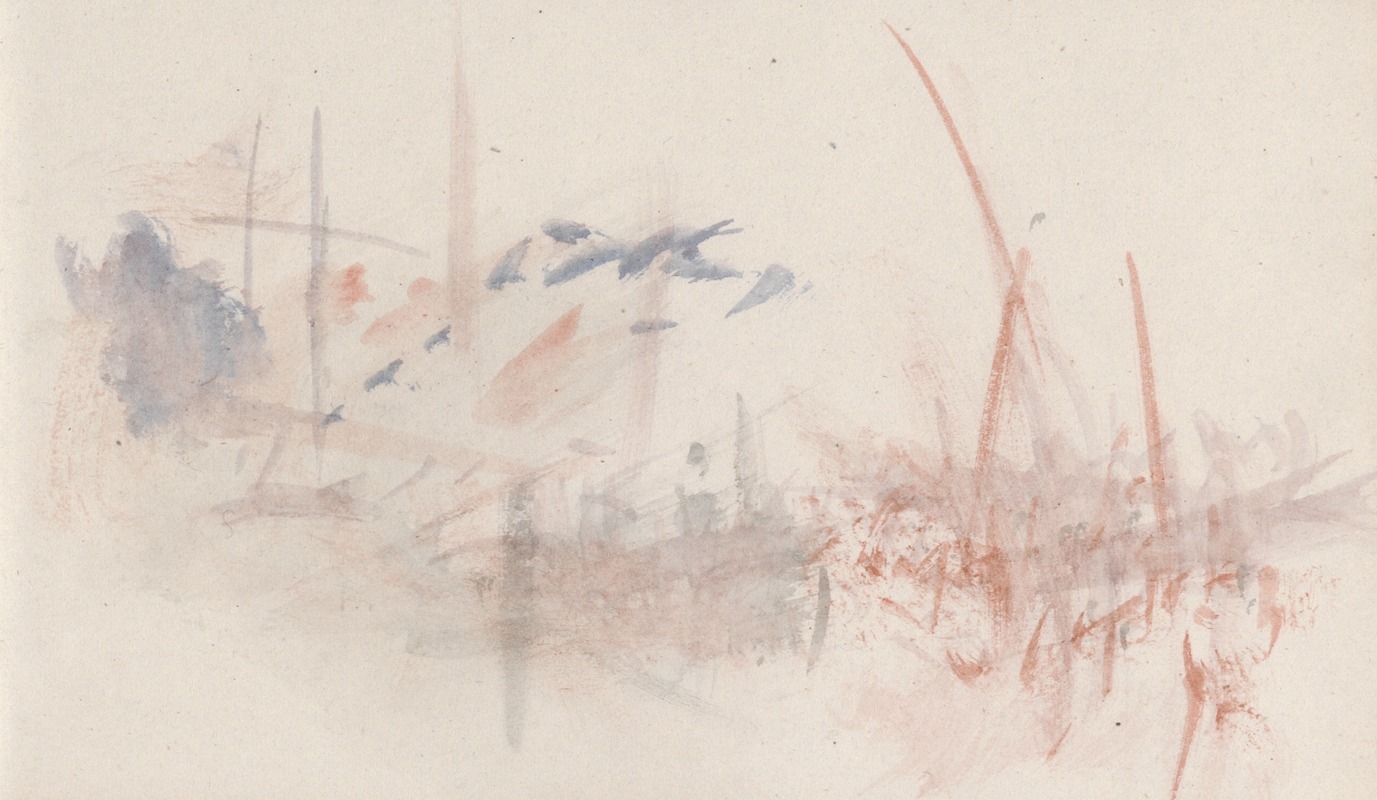
The Channel Sketchbook 43
A hand-painted replica of Joseph Mallord William Turner’s masterpiece The Channel Sketchbook 43, meticulously crafted by professional artists to capture the true essence of the original. Each piece is created with museum-quality canvas and rare mineral pigments, carefully painted by experienced artists with delicate brushstrokes and rich, layered colors to perfectly recreate the texture of the original artwork. Unlike machine-printed reproductions, this hand-painted version brings the painting to life, infused with the artist’s emotions and skill in every stroke. Whether for personal collection or home decoration, it instantly elevates the artistic atmosphere of any space.
Joseph Mallord William Turner, an eminent British artist known for his expressive colorizations, imaginative landscapes, and turbulent marine paintings, created a series of sketchbooks throughout his career that provide insight into his artistic process and development. Among these is "The Channel Sketchbook 43," which is part of the Turner Bequest housed at the Tate Britain in London.
Turner was born in 1775 and became one of the most celebrated landscape painters of the 19th century. His work is often associated with the Romantic movement, and he is known for his innovative use of light, color, and atmospheric effects. The sketchbooks he left behind are invaluable resources for understanding his techniques and the evolution of his style.
"The Channel Sketchbook 43" is one of many sketchbooks Turner used during his travels. Turner was known for his extensive travels across Europe, where he sought inspiration from various landscapes and seascapes. His journeys often took him to coastal regions, where he was captivated by the interplay of sea and sky. This particular sketchbook likely contains studies and preliminary sketches related to his observations of the English Channel, a body of water that separates Southern England from northern France.
Turner's sketchbooks were not merely collections of drawings; they were working documents where he explored ideas, compositions, and the effects of light and weather. They often include quick pencil sketches, watercolor studies, and notes that capture his immediate impressions of a scene. These sketchbooks reveal Turner's ability to distill complex scenes into simple, yet powerful, compositions.
The sketches in "The Channel Sketchbook 43" would have served as references for Turner when he returned to his studio to create finished paintings. His ability to capture the essence of a scene with minimal lines and washes is evident in these sketches, showcasing his mastery of both drawing and watercolor techniques.
Turner's fascination with the sea is a recurring theme in his work, and the English Channel, with its dynamic weather and changing light, provided a rich source of inspiration. His sketches often depict the movement of water, the play of light on the waves, and the dramatic skies that characterize the region. These elements are central to many of Turner's most famous paintings, where he sought to convey the sublime power and beauty of nature.
The Turner Bequest, which includes "The Channel Sketchbook 43," was given to the nation upon Turner's death in 1851. It comprises a vast collection of his works, including paintings, drawings, and sketchbooks, and is housed at the Tate Britain. This collection offers a comprehensive view of Turner's artistic journey and his contributions to the art world.
In summary, "The Channel Sketchbook 43" by Joseph Mallord William Turner is a testament to the artist's skill in capturing the essence of the natural world. Through his sketches, Turner explored the interplay of light, color, and atmosphere, laying the groundwork for his later masterpieces. The sketchbook remains an important part of the Turner Bequest, providing insight into the creative process of one of Britain's most renowned artists.





